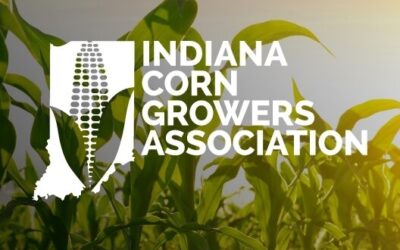USMEF’s Spronk says Indiana’s efforts in Indonesia opens U.S. red meat sales
By John Herath, USMEF
U.S. Meat Export Federation (USMEF) Chair Randy Spronk joined a team of representatives from the Indiana Soybean Alliance (ISA) to meet with prospective buyers and study market opportunities for U.S. soybeans and red meat in Indonesia. ISA, a USMEF member, has developed strong trade relationships providing soy protein in Indonesia, coordinated with USMEF staff on the day-long event.
USMEF ASEAN Director Sabrina Yin and Indonesia Representative Arrofi Satrio Alam set up a meet-and-greet for the ISA group with Indonesian meat importers and presented a market overview about opportunities and challenges for U.S. red meat in the region. USMEF then led the ISA group to Food and Hotel Indonesia, one of the ASEAN region’s largest food trade shows.
“Indonesia has a young and growing population of 279 million and 13 percent of the population is not Muslim. That’s about 36 million people, which for U.S. pork is an export market about the size of Canada,” Spronk said. “There are opportunities to develop markets in regions of Indonesia where a high percentage of the population is non-Muslim.”
U.S. pork market share in Indonesia grew from 11.5 percent in 2023 to 38.5 percent in 2024, largely due to reduced supply from the European Union. In the first half of 2024, U.S. pork exports to Indonesia increased 21 percent to 380 metric tons and 14 percent in value to $1.5 million. USMEF has been conducting promotions at upscale retail outlets in targeted markets to grow awareness and differentiate U.S. pork as high-quality.
“Indonesia is a long-term growth market and pork consumption is very low, even among the non-Muslim populations.” Spronk added. “It reminds me of Colombia, where we helped double the consumption of pork over a 10-year period.”
For U.S. beef, Spronk sees opportunities for middle meats in high-end foodservice and modern retail while underutilized cuts and variety meats have potential in foodservice and wet markets. Per capita beef consumption is also low, as much of the population has not experienced high-quality, grain-fed beef.
The main challenge for U.S. beef in Indonesia is the plant approval process, which is the most extensive of any country that requires establishment registration.
Spronk noted that Indiana soy growers have built strong relationships for providing protein in the market, and that could be beneficial for U.S. pork producers.
“Indiana Soy has the relationships here – you’re already here with soybeans, and you have the logistics to distribute soybeans to a multitude of islands,” Spronk said. “So, I think there’s great opportunity for pork products to be able to move into the market too. And I think we can grow the beef market to compete with Australia and Brazil.”
Spronk’s inclusion on the ISA team was funded by the National Pork Board. Funding support for the activity was provided by ISA, the Beef Checkoff Program, the National Pork Board and USDA’s Market Access Program.
Posted: September 18, 2024
Category: ICMC, Indiana Corn and Soybean Post - September 2024, ISA, News




